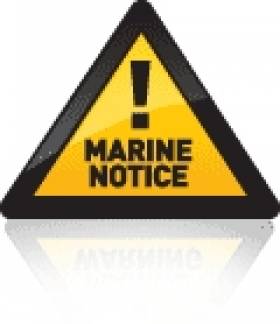Displaying items by tag: Marine Survey
Marine Notice: Marine Survey Operations Off The South Coast
#MarineNotice - The Department of Transport, Tourism and Sport (DTTAS) advises that Bibby Hydromap is scheduled to carry out marine survey operations along the proposed interconnector route between Ireland and France.
Similar to the recent geophysical surveys of the same route, the marine surveys will extend from the shoreline at two locations (Ballinwilling Strand main route and Ballycroneen Beach alternative route), to the north coast of France near Roscoff.
The survey will comprise of 250 geotechnical locations between the 10-metre contours of both countries. The survey vessel will be in DP (stationary) while collecting samples and a wide berth is required.
Survey operations were expected to start on Thursday 11 June 2015 and will run until 30 July 2015, weather permitting.
Survey works will be undertaken on the survey vessel RRS Ernest Shackleton (Callsign ZDLS1). The vessel will operate on a 24-hour basis, will display appropriate day shapes and lights during survey operations and will actively transmit an AIS signal.
Survey operations will involve towing survey equipment below the surface up to 600m behind the vessel. A wide berth is requested at all times as the vessel will be restricted in her ability to manoeuvre.
All vessels, particularly those engaged in fishing, are requested to give the RRS Ernest Shackleton and her towed equipment a wide berth and keep a sharp lookout in the relevant areas.
Further details of the marine survey area are included in Marine Notice No 27 of 2015, a PDF of which is available to read or download HERE.
Waterford: Where Tallships and Science Meet
This was the RV Keary's first INFOMAR survey leg of 2011 and it was also the first time that both vessels have worked in tandem. The mapping of the estuary was from an area just west of the city's Rice Bridge to the open sea at the mouth of Waterford Harbour.
The estuary was mapped before in 2007 using the Marine Institutes larger vessel the RV Celtic Voyager, which covered the harbour approaches from the 10m contour to greater depth offshore. Both RV Keary and RV Geo overlapped their coverage with this previous data, producing a comprehensive and seamless seabed map of the area.
RV Keary is constructed of marine grade aluminium and was custom built in 2008 for the (GSI) by Veecraft Marine of Capetown, South Africa.
The 15m craft with a draft of just 2m is equipped with an extensive range of highly sophisticated technology. She has an open working area at the aft-deck to conduct operations and is licensed to carry up to 12 personnel. For further vessel characteristics click HERE.
The 34-tonne craft made her 7,000 mile delivery voyage from the African continent to Europe. She was firstly transported on the deck of a cargoship to Rotterdam. After unloading at the Dutch port the 22-knot capable craft set off with several calls along the UK south coast to include loading bunkers before finally reaching Dun Laoghaire, from where she entered service in April 2009.






























































